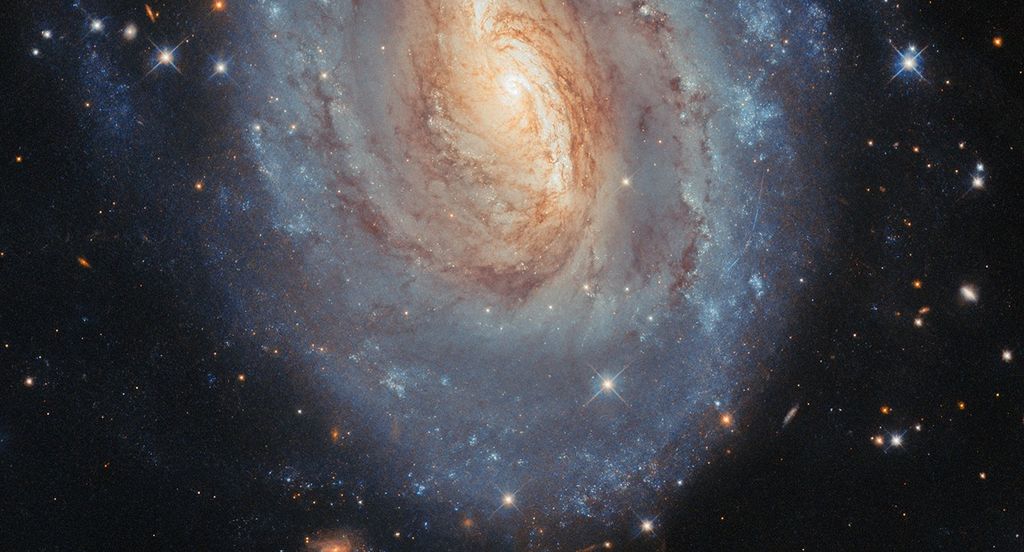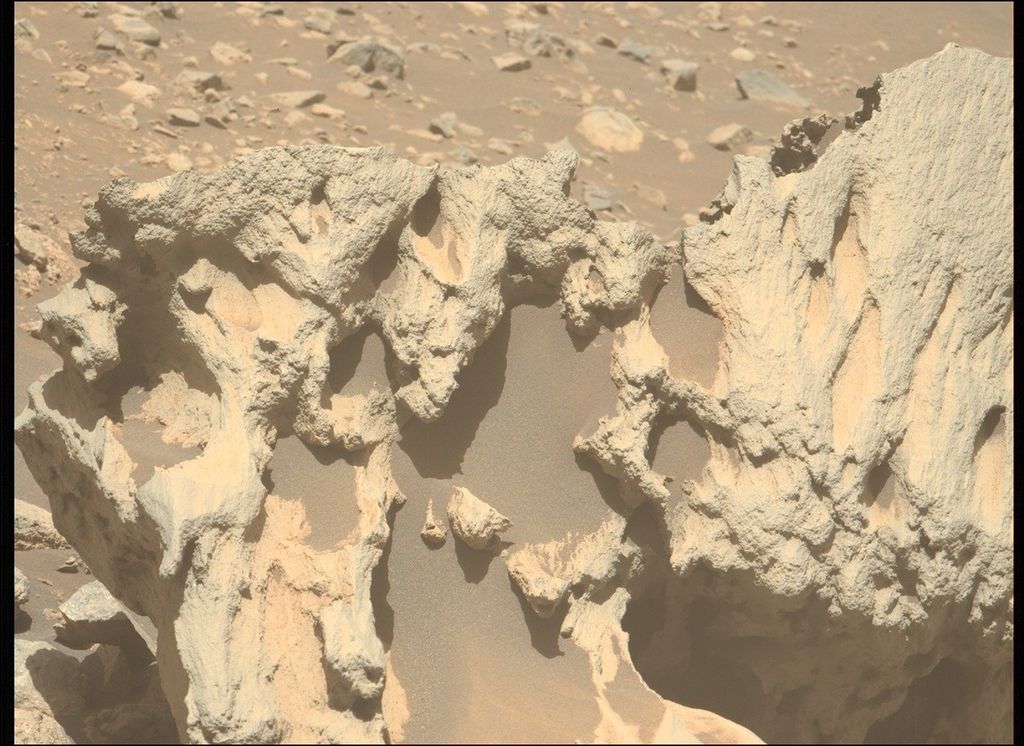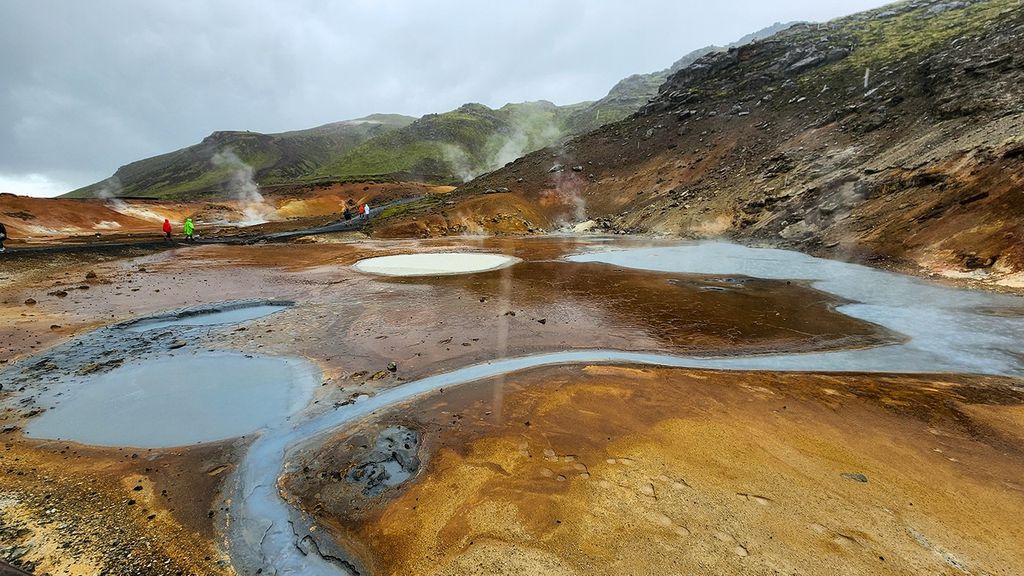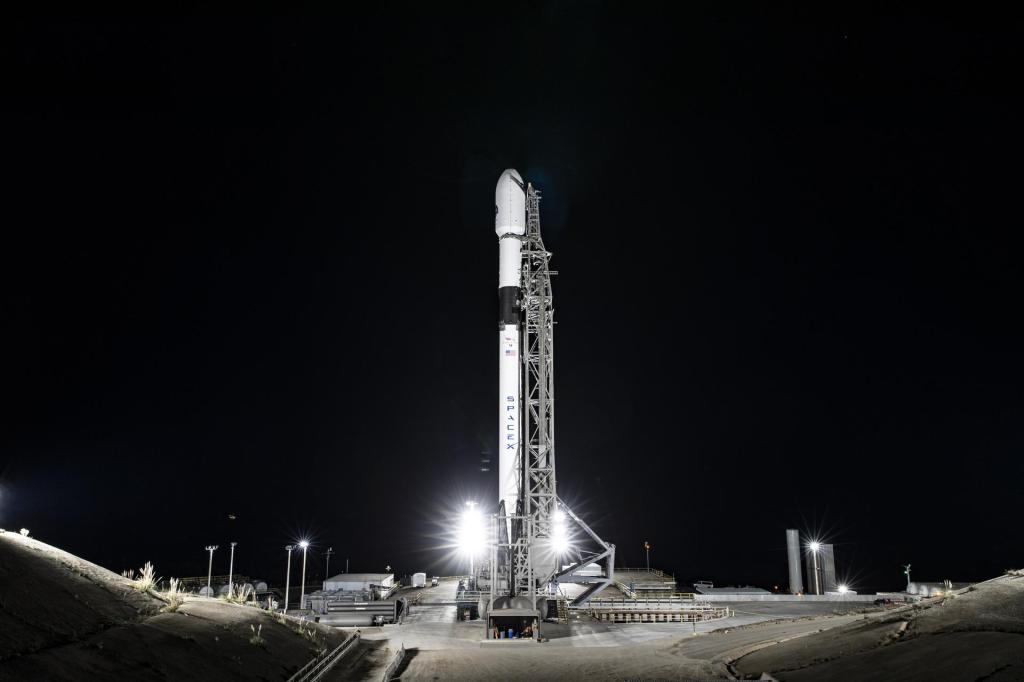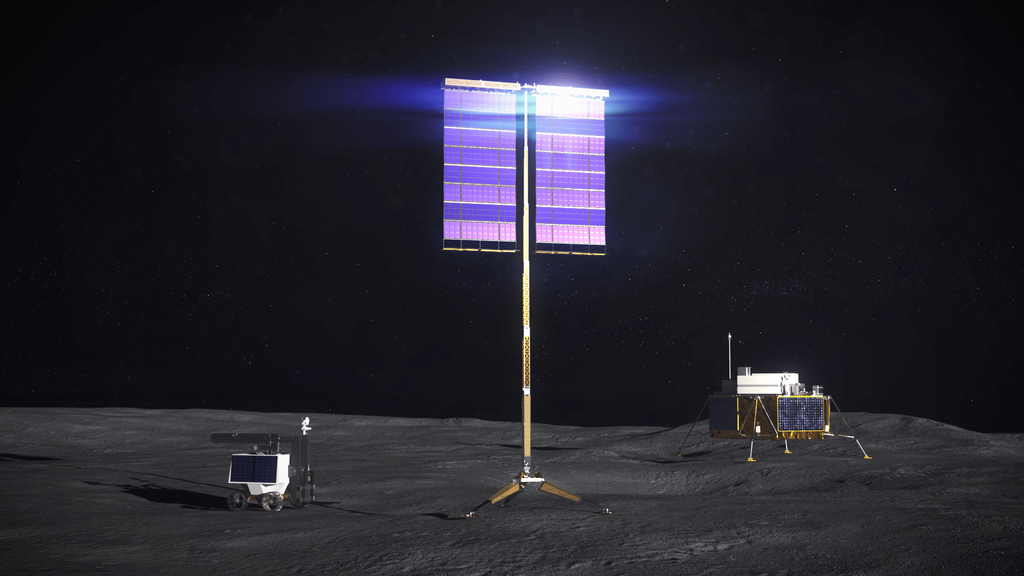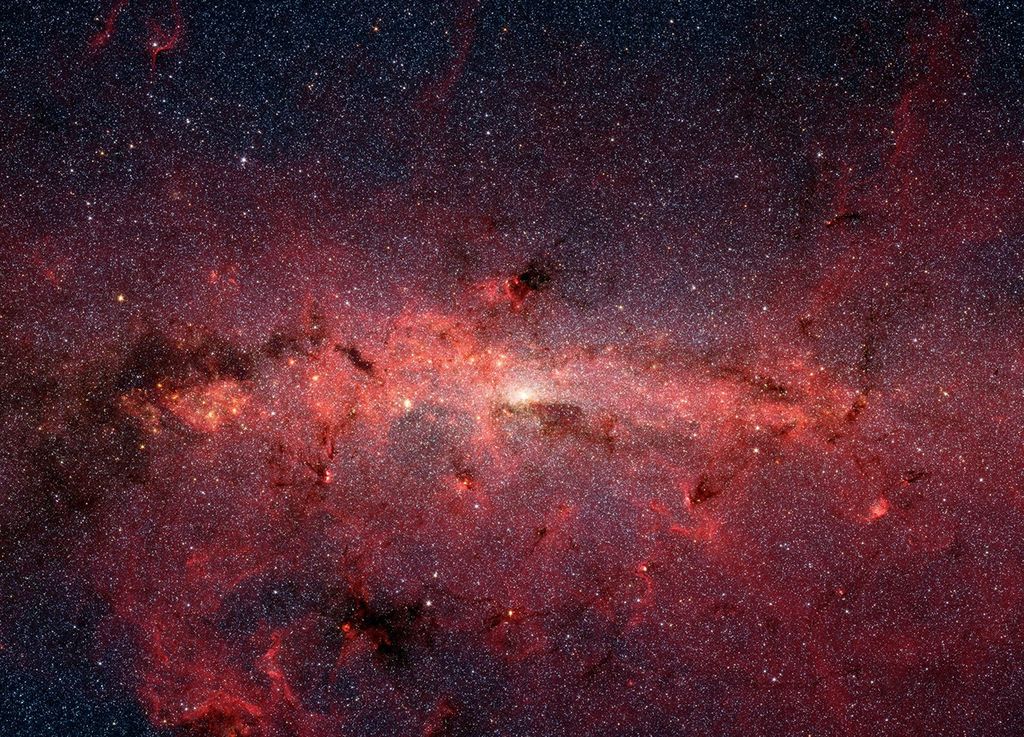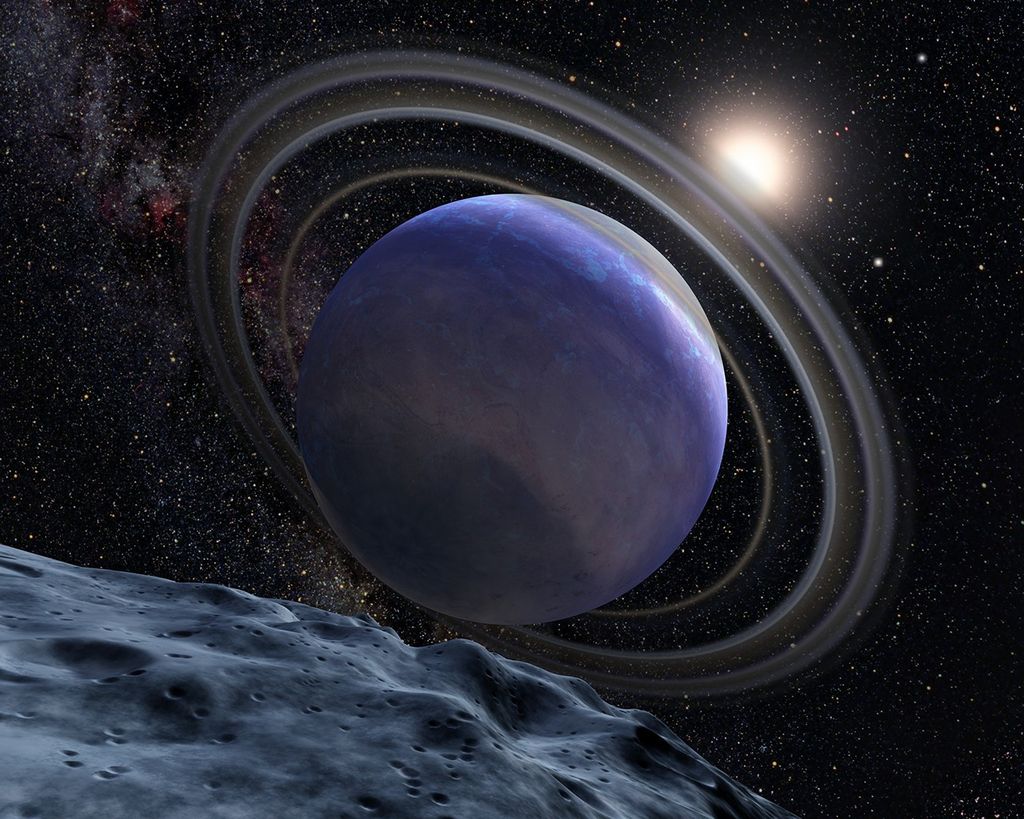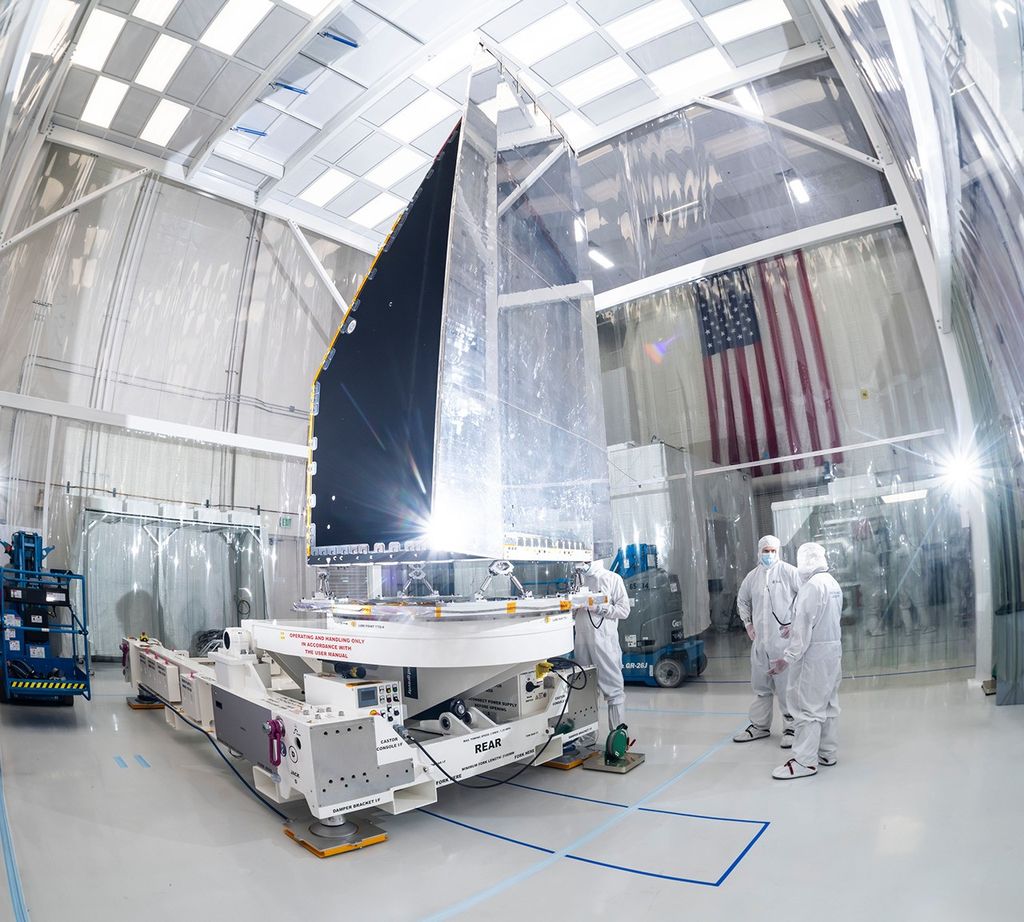1 min read
Infrared Universe: The Crab Nebula
The Crab Nebula, the result of a bright supernova explosion seen by Chinese and other astronomers in the year 1054, is 6,500 light-years from Earth. At its center is a super-dense neutron star, rotating once every 33 milliseconds, shooting out rotating lighthouse-like beams of radio waves and light—a pulsar (the bright dot at image center). The nebula’s intricate shape is caused by a complex interplay of the pulsar, a fast-moving wind of particles coming from the pulsar, and material originally ejected by the supernova explosion and by the star itself before the explosion.
Radio: The neutron star’s fierce “wind” of charged particles energized the nebula, causing it to emit the radio waves (in red) captured by the Very Large Array.
Credit: NRAO, AUI, NSF
Infrared: The Spitzer Space Telescope image (shown in yellow) includes the glow of dust particles absorbing ultraviolet and visible light, and re-radiating at lower energies (longer wavelengths) in the infrared.
Credit: JPL, Caltech
Optical: The Hubble Space Telescope image (shown in green) offers a very sharp view of hot filamentary structures that permeate this nebula.
Credit: STScI
Ultraviolet: The XMM-Newton data (in blue) features a cloud of electrons, and highlights the background stars since they have the strongest signal in the ultraviolet-light exposure.
Credit: NASA, ESA
X-ray: The Very Large Array data (in purple) also captures the energetic cloud of electrons driven by a rapidly rotating neutron star, or pulsar, at its core.
Credit: CXC
About the Infrared Universe Collection
The human eye can only see visible light, but objects give off a variety of wavelengths of light. To see an object as it truly exists, we would ideally look at its appearance through the full range of the electromagnetic spectrum. Telescopes show us objects as they appear emitting different energies of light, with each wavelength conveying unique information about the object. The Webb Space Telescope will study infrared light from celestial objects with much greater clarity and sensitivity than ever before. Explore the Infrared Universe. Adapted from Cool Cosmos by IPAC, with additional contributions from Bruno Merin and Miguel Merin (Pludo).
- Release DateMay 22, 2018
- CreditVideo: NASA, ESA, Gregory Bacon (STScI); Image: NRAO, AUI, NSF, NASA-JPL, Caltech, STScI, NASA, ESA, CXC
Downloads
Share
Details
Laura Betz
NASA’s Goddard Space Flight Center
Greenbelt, Maryland
laura.e.betz@nasa.gov
NASA, ESA, Gregory Bacon (STScI)
NRAO, AUI, NSF, NASA-JPL, Caltech, STScI, NASA, ESA, CXC

